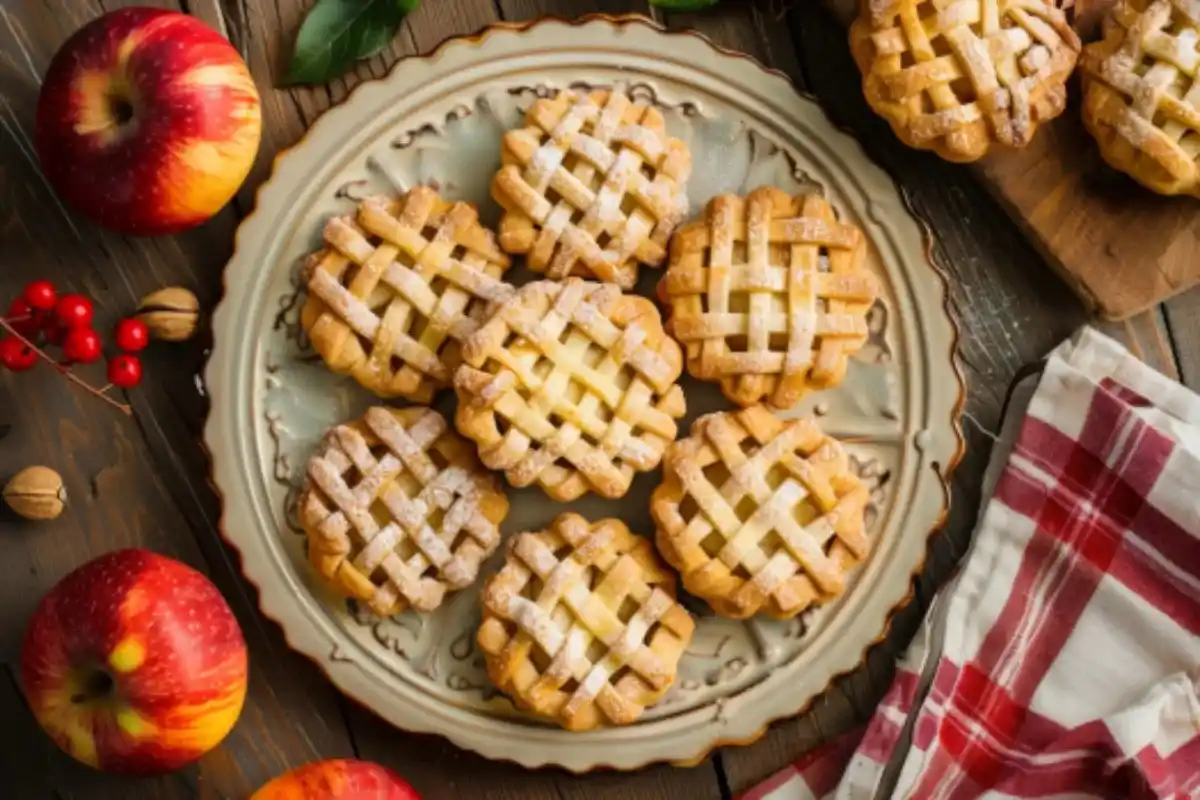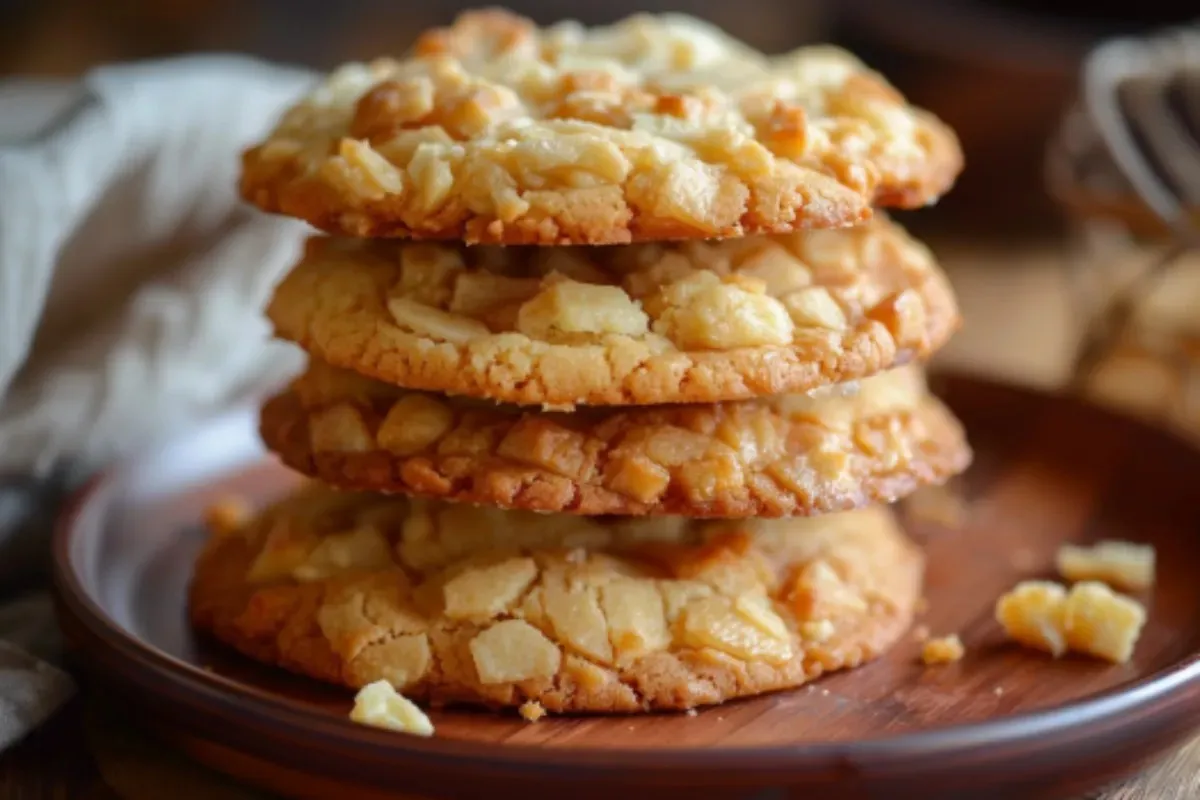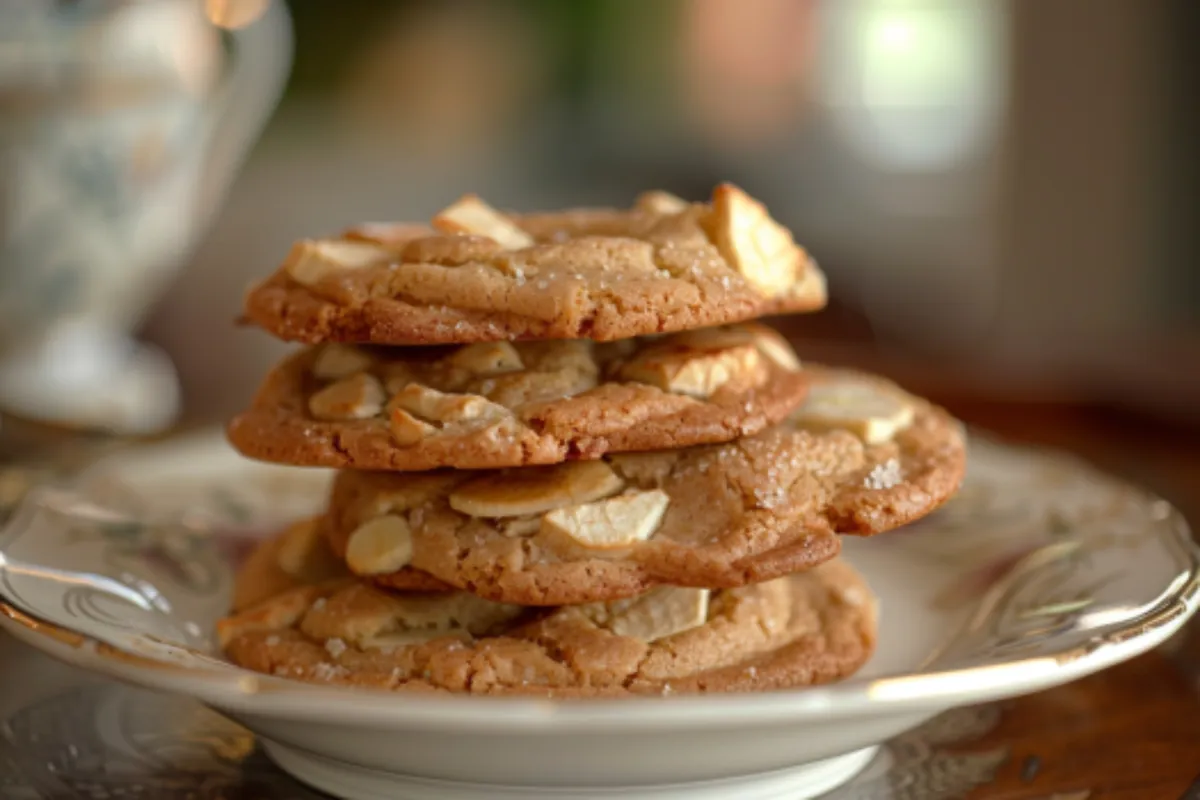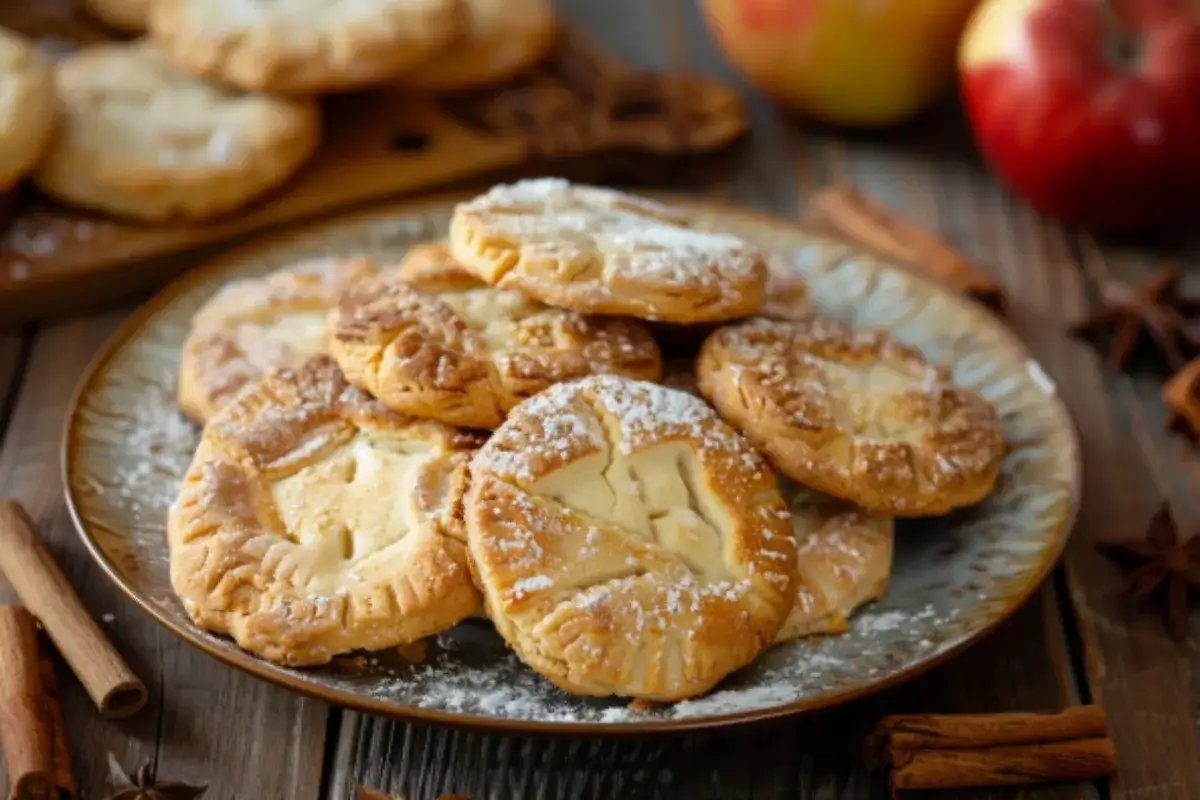Apple pie is a beloved dessert in many homes, but both beginner and seasoned bakers often face a shared challenge: the apples in the pie become overly soft and mushy. or, worse, resemble applesauce. If you’ve ever baked an apple pie only to discover a soft, unappealing filling, you may have found yourself asking, “Why did my apples turn to applesauce in my pie?” This comprehensive guide delves into the causes of this common problem and provides practical solutions to help you achieve perfectly baked apple pies, where the apples retain their structure and texture.
Understanding the Importance of Apple Varieties
The first and most critical factor to consider when making apple pie is the type of apples you are using. Not all apples behave the same way when subjected to heat. While some apples retain their shape and texture during baking, others tend to break down into a mushy consistency, meaning that apples turn to applesauce in my pie. The texture of the apples in your pie is directly linked to their variety.
Characteristics of Baking Apples
Different apples have different characteristics, such as their firmness, sugar content, and pectin levels, all of which influence how they behave when cooked. Apples that are ideal for baking are generally:
- Firm: Firm apples maintain their structure better under heat.
- Low Moisture: Apples with lower water content help avoid excess liquid in your pie.
- High Pectin: Pectin is a naturally occurring substance in apples that helps maintain their structure during cooking.
Some of the best apples for baking include Granny Smith, Honeycrisp, Braeburn, and Pink Lady. These apples are known for their firm texture and ability to hold up well under heat, making them ideal for pies.
On the other hand, apples like McIntosh, Red Delicious, and Cortland are softer varieties that are more likely to break down and turn into applesauce when baked. These apples are best reserved for other uses, such as making apple sauce, jams, or cider.
Choosing the Right Apples to Prevent Applesauce in Pies

When choosing apples for your pie, it’s important to keep in mind that a combination of apple varieties can offer a balance of both flavor and texture. Tart, firm apples provide structure, while sweeter, softer apples can add depth of flavor. Without careful selection, however, apples turn to applesauce in my pie. Here are some common combinations that work well:
- Granny Smith + Golden Delicious: Granny Smith apples offer firmness and a tart flavor, while Golden Delicious adds sweetness.
- Braeburn + Fuji: Braeburn holds its shape well and has a slightly tart taste, while Fuji adds a crisp sweetness without breaking down too much.
- Honeycrisp + Jonathan: Honeycrisp is known for its crunch, and Jonathan apples bring a sweet-tart balance, perfect for a flavorful and structured pie.
Experimenting with different combinations of apples allows you to find the perfect balance between structure and flavor in your pie. You can explore other pie recipes, like the Apple Pie Cookies Recipe, that focus on balancing flavors.
The Science Behind Why Apples Turn to Applesauce in Pies
Understanding the science behind why apples break down during baking is key to preventing your apples from turning to mush in your pie. Several factors come into play when apples are heated, and the process of how they react to heat is rooted in their cellular structure.
Pectin: The Apple’s Natural Structural Support
One of the most important components of an apple’s structure is pectin, a naturally occurring carbohydrate found in the cell walls of the fruit. Pectin acts as a binding agent that holds the cells together. When apples are exposed to heat, pectin begins to break down, which leads to the softening of the fruit, and ultimately, apples turn to applesauce in my pie. The rate at which this happens depends largely on the variety of apple and the conditions under which it is baked.
- High-Pectin Apples: Firm apple varieties, such as Granny Smith and Braeburn, contain higher levels of pectin, which means they hold their shape better when cooked.
- Low-Pectin Apples: Softer varieties like McIntosh and Cortland have lower pectin content, which means they are more likely to break down into applesauce during baking.
How Moisture Affects Apple Breakdown and Turns Apples into Applesauce
Moisture is another key factor that can influence whether your apples turn mushy in a pie. Apples naturally contain water, and when they are baked, this water is released. In some apple varieties, the water content is high, which can lead to a more liquidy filling. Additionally, when sugar is added to the filling, it draws out even more moisture from the apples, exacerbating the problem, resulting in instances where apples turn to applesauce in my pie.
To control moisture in your pie, it’s important to choose apples with a lower water content. Moreover, incorporating a thickening agent, such as cornstarch or tapioca, can help absorb excess moisture and prevent the apples from breaking down. Check out the Cinnamon Roll Apple Pie for an example of how thickening agents are used in creative pie recipes to control moisture.
You can learn more about how sugar impacts moisture in baking from how sugar affects baking.
The Role of Acidity in Preventing Apples from Turning to Applesauce in Your Pie
Both sugar and acidity also play a role in the breakdown of apples during baking. Sugar draws out moisture from the apples, which can cause the filling to become watery. Additionally, sugar can speed up the breakdown of pectin, contributing to a softer texture.
Acid, on the other hand, helps slow the breakdown of pectin. This is why many apple pie recipes include lemon juice or other acidic ingredients. The acidity helps preserve the structure of the apples during baking, ensuring they don’t turn to mush. The balance between sugar and acid is critical in achieving the perfect apple pie filling.
Why Did My Apples Turn to Applesauce?
Several common mistakes can lead to your apples turning to applesauce in your pie. Understanding these pitfalls will help you adjust your recipe and techniques to prevent this problem in the future.
Using the Wrong Apple Variety
As we discussed earlier, using the wrong variety of apples is one of the most common reasons why apples turn to mush in a pie. Soft apples, such as McIntosh or Cortland, are prone to breaking down during baking due to their lower pectin content. If you want a pie with apples that retain their shape, stick to firmer varieties like Granny Smith or Honeycrisp.
Excess Moisture in the Filling
Another reason apples turn to applesauce in a pie is the presence of too much moisture in the filling. This can happen for several reasons:
- Overly juicy apples: Some apples naturally contain more water than others. When baked, they release this water, which can lead to a watery, mushy filling.
- Too much sugar: As sugar draws moisture out of the apples, an excessive amount of sugar can contribute to a soupy filling.
- No thickener: Failing to use a thickening agent, such as cornstarch, tapioca, or flour, can allow the excess moisture to pool in the pie, resulting in mushy apples.
Overbaking the Pie
Even if you’ve selected the right apples and controlled the moisture in your filling, overbaking your pie can still cause the apples to turn to applesauce in my pie. When apples are exposed to heat for too long, their structure breaks down, and they lose their firmness. To avoid this, it’s important to follow your recipe’s recommended baking time and temperature closely. Additionally, using a higher baking temperature for a shorter amount of time can help the apples retain their texture while still allowing the pie to cook through.
For instance, many pie recipes suggest baking at 425°F for 40-45 minutes, rather than a lower temperature for an extended period. This allows the crust to brown and the apples to cook without becoming overly soft. For more tips on achieving perfect results, check out recipes like Rotisserie Chicken Recipes that also rely on balancing cooking times and temperatures.
How to Choose the Best Apples for Pie to Prevent Applesauce Texture

Now that we’ve discussed why apples turn to applesauce in pies, let’s explore how to choose the best apples for your next pie. Selecting the right apple variety is the first step to ensuring your pie filling remains perfectly structured.
Top Apple Varieties for Baking
Here’s a more detailed breakdown of some of the best apple varieties for pie baking:
- Granny Smith: A classic choice for pies, Granny Smith apples are known for their tart flavor and firm texture. They hold up well under heat and add a sharp contrast to the sweetness of the pie filling.
- Honeycrisp: Honeycrisp apples are sweet and firm, making them an excellent choice for pies. They maintain their texture well during baking and add a pleasant crunch to the filling.
- Braeburn: With a balanced sweet-tart flavor and firm texture, Braeburn apples are great for pies. They hold their shape well and complement a variety of flavors.
- Pink Lady: Pink Lady apples are crisp and sweet with a tart finish. They retain their texture well during baking and add a refreshing flavor to the pie.
- Jonagold: Jonagold apples are a cross between Jonathan and Golden Delicious, offering a blend of sweetness and tartness. They hold their shape during baking and are ideal for pies that need a balanced flavor.
By selecting one or a combination of these apple varieties, you can ensure your pie has both the right texture and flavor.
Techniques to Prevent Mushy Apples in Pie
In addition to choosing the right apples, there are several pie-baking techniques that can help prevent your apples from turning to mush. Let’s explore some methods that will improve the texture of your pie filling.
Precooking the Apples
One method that can help maintain the structure of the apples is to precook them before adding them to the pie. This technique allows you to control the amount of moisture in the apples and prevent them from releasing too much liquid during baking. Here’s how to precook apples for pie:
- Peel and slice the apples: Cut the apples into even slices to ensure they cook evenly.
- Sauté the apples: In a large pan, sauté the apple slices with a small amount of butter and sugar until they start to soften. This helps remove some of the moisture from the apples without breaking them down completely.
- Cool the apples: Allow the apples to cool before adding them to the pie crust. This prevents the filling from becoming too watery during baking.
Precooking apples is especially useful for pies that require a long bake time or for recipes that use apples with higher water content.
Using Thickeners in the Filling
As mentioned earlier, using a thickening agent is essential for controlling moisture in the pie filling. Thickeners like cornstarch, flour, or tapioca absorb excess liquid, ensuring that the apples don’t turn mushy. Here’s a breakdown of the most common thickeners used in pie fillings:
- Cornstarch: Cornstarch is a popular choice for thickening pie fillings because it creates a smooth, glossy texture. It works well with juicy apples and helps prevent the filling from becoming too watery.
- Tapioca: Tapioca is another effective thickener, particularly for pies that require a longer bake time. It absorbs moisture and creates a gel-like consistency that holds the filling together.
- Flour: Flour is a traditional thickener that is often used in apple pies. It absorbs excess moisture and helps create a stable filling, though it can result in a slightly cloudier texture compared to cornstarch or tapioca.
To use a thickener, simply toss the apple slices with your chosen thickener before adding them to the pie crust. This ensures that the excess moisture is absorbed during baking, preventing the apples from breaking down.
Balancing Sugar and Acid
As we’ve already discussed, sugar draws moisture out of the apples and can contribute to a mushy filling, causing instances where apples turn to applesauce in my pie. To counteract this, it’s important to balance the amount of sugar with an acidic ingredient, such as lemon juice. The acid helps slow the breakdown of pectin, allowing the apples to maintain their structure.
Most apple pie recipes call for a small amount of lemon juice or apple cider vinegar to balance the sweetness of the apples and preserve their texture during baking. Be sure to include this step when making your pie, as it can make a significant difference in the final texture of the filling.
Controlling Baking Time and Temperature
Baking time and temperature are critical factors in achieving the perfect apple pie. As mentioned earlier, baking at a higher temperature for a shorter amount of time helps the apples retain their structure while still allowing the pie to cook through. Here are some general guidelines for baking apple pies:
- Bake at 425°F for 40-45 minutes: This is the standard baking temperature and time for most apple pies. It allows the crust to brown and the apples to cook through without turning to mush.
- Use a pie shield: If the crust is browning too quickly, use a pie shield or cover the edges with aluminum foil to prevent burning.
- Check for doneness: To check if the pie is done, insert a knife or skewer into the center of the pie. The apples should be tender but still hold their shape.
Recipe Adjustments to Stop Apples from Becoming Applesauce in Pies

If you’re consistently encountering mushy apples in your pies, it may be time to make some adjustments to your recipe. Here are some modifications you can try:
Reduce Sugar Content
As we’ve mentioned, sugar draws moisture out of the apples, which can contribute to a watery filling. Reducing the amount of sugar in your recipe can help minimize the amount of liquid released from the apples and prevent instances where apples turn to applesauce in my pie. Additionally, using a combination of sweet and tart apples can provide enough natural sweetness without the need for excessive sugar.
Use Thickeners
If your recipe doesn’t already include a thickener, consider adding one to the filling. Cornstarch, tapioca, or flour can absorb excess moisture and prevent the apples from turning mushy.
Adjust Baking Time and Temperature
If your pie is consistently overcooked, try reducing the baking time or increasing the temperature. Baking at a higher temperature for a shorter amount of time helps the apples retain their structure while still allowing the pie to cook through.
Common Pie-Baking Mistakes to Avoid
Even experienced bakers can make mistakes that lead to mushy apples in pies. Here are some common pitfalls to avoid:
- Using the wrong apples: Always choose firm apples with a high pectin content for baking. Soft apples are more likely to break down during cooking.
- Skipping the thickener: If you don’t use a thickening agent, the excess moisture from the apples can lead to a watery, mushy filling.
- Overbaking the pie: Be mindful of baking time and temperature to avoid overcooking the apples. Baking for too long can cause the apples to lose their structure and turn to mush.
Frequently Asked Questions
1. Can I Use Any Apple for Pie?
- While technically you can use any apple for pie, some varieties will turn to mush faster than others due to their low pectin content. If you want apples that hold their shape during baking, stick to firm varieties like Granny Smith or Honeycrisp.
2. What Can I Do if My Apples Are Turning to Mush During Baking?
- If your apples are turning mushy in the pie, try using a higher baking temperature and reducing the moisture in the filling. Adding a thickening agent like cornstarch or tapioca can also help absorb excess liquid.
3. Why Are My Apples Turning Brown Before I Bake Them?
- Apples turn brown due to oxidation, which occurs when the flesh of the apple is exposed to air. To prevent browning, toss the apple slices in lemon juice or soak them in a solution of water and salt before baking.
4. Is It Okay to Precook Apples Before Baking the Pie?
- Yes, precooking the apples can help them retain their structure during baking. This technique is especially useful when working with apples that have a high water content, as it allows you to control the amount of moisture in the filling.
5. Can I Mix Different Apple Varieties in My Pie?
- Absolutely! Mixing different apple varieties can create a more complex and flavorful pie filling. Combining firm, tart apples with sweeter, softer apples can provide the perfect balance of texture and taste.
Conclusion: Achieving the Perfect Apple Pie
Perfecting your apple pie takes practice, but by following these tips, you can ensure your apples remain firm and flavorful, rather than turning to mush. Remember to:
- Choose the right apple varieties, focusing on firm apples with high pectin content.
- Control the moisture in your filling by using a thickening agent and balancing sugar and acid.
- Bake your pie at the right temperature for the right amount of time to avoid overcooking the apples.
With these strategies in place, you can confidently bake an apple pie that has the perfect texture and flavor every time. So, next time you’re in the kitchen, armed with the right knowledge and techniques, you can avoid applesauce-like fillings and create a pie that’s a true masterpiece. Happy baking!

